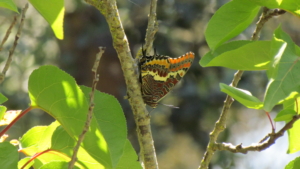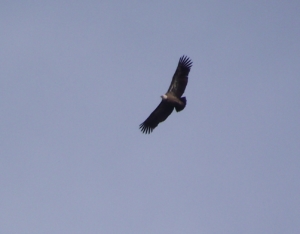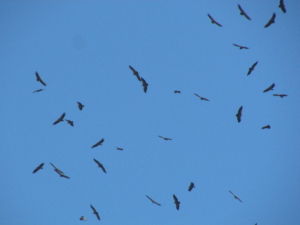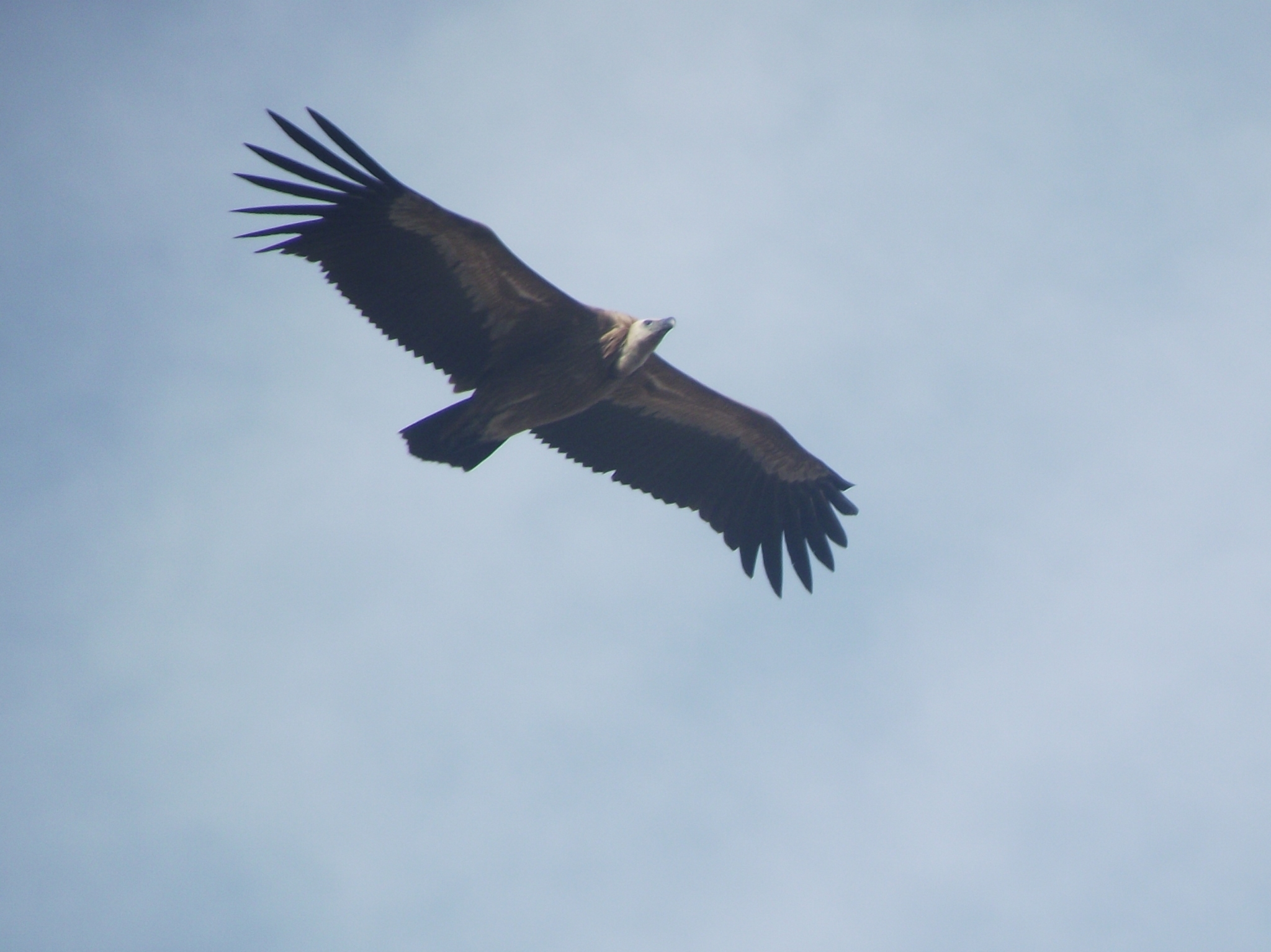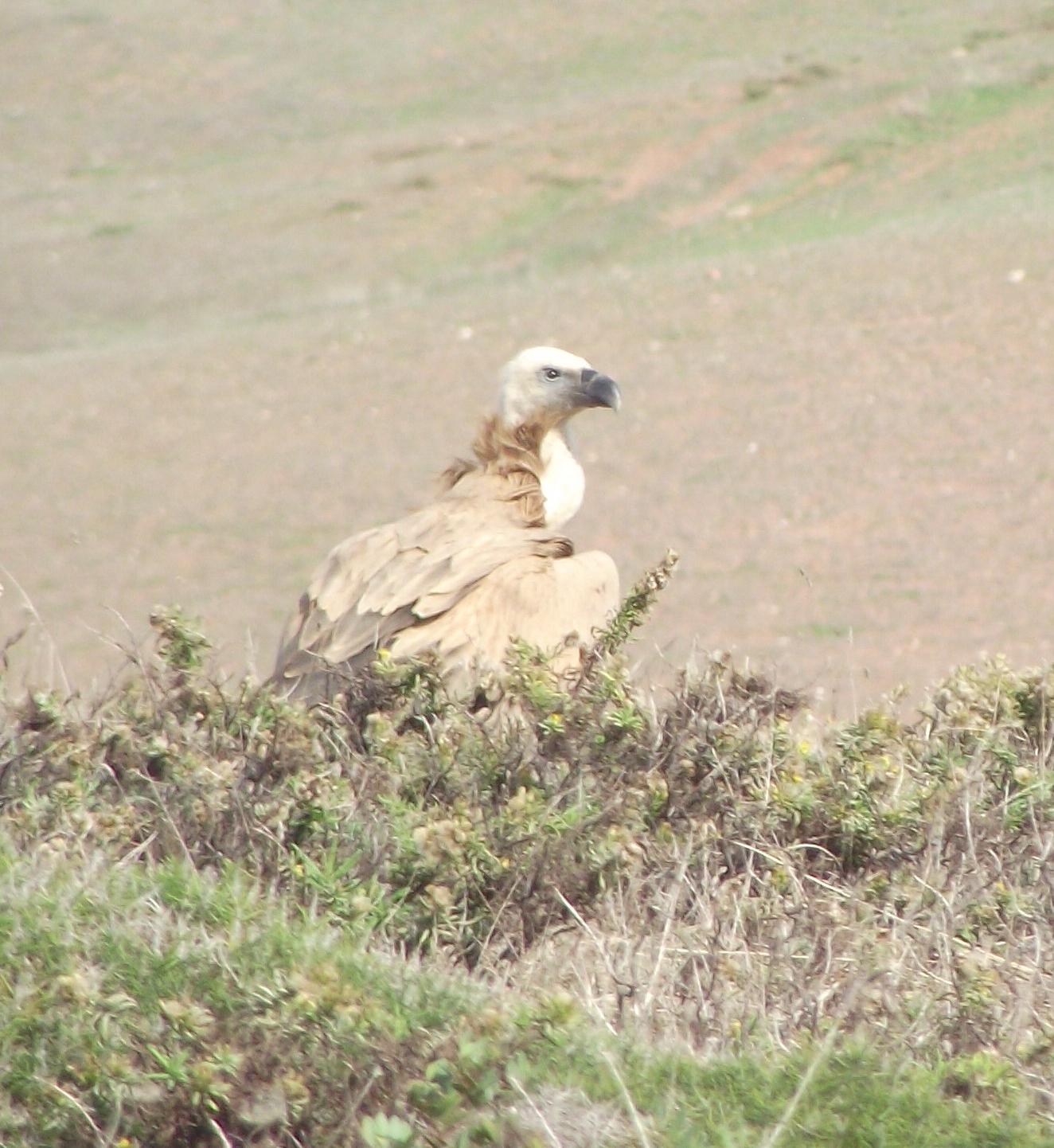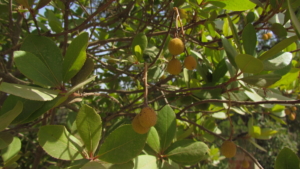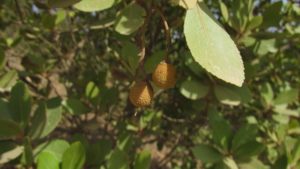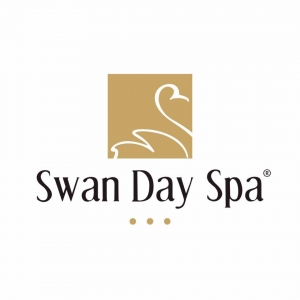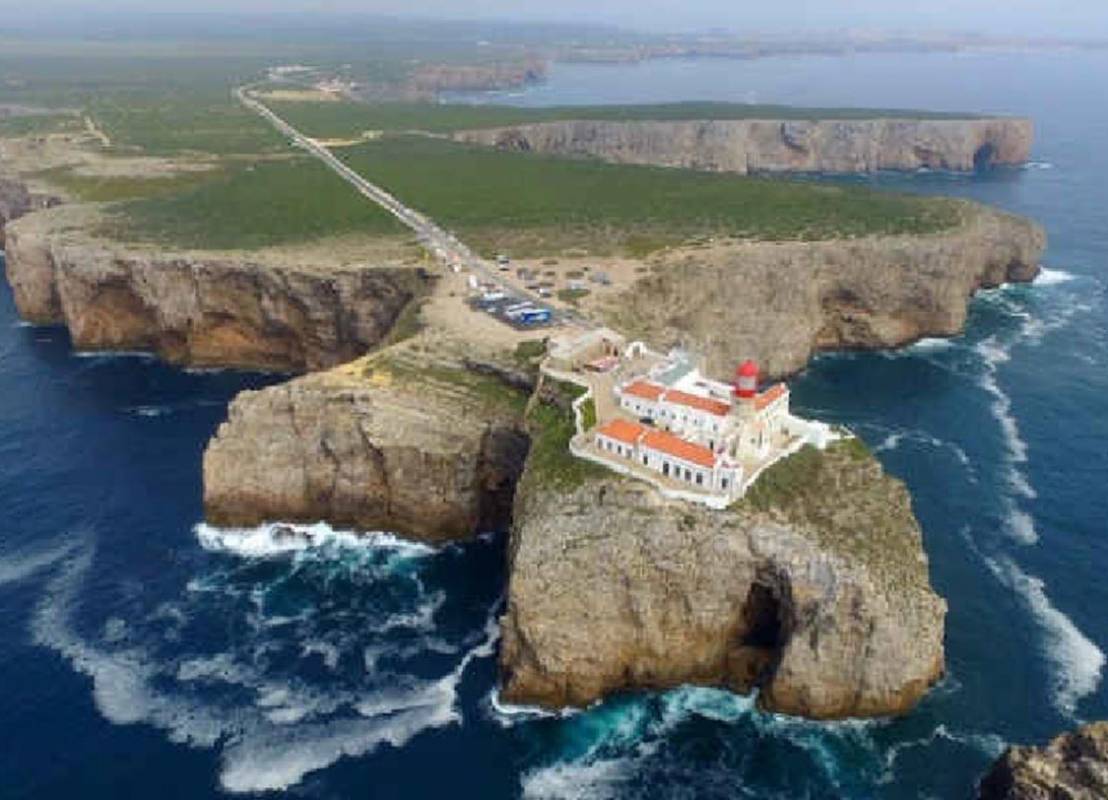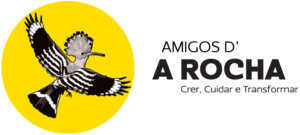
Newsletter October 2018
Dear Friends,
You are the first to see our NEW Logo which is being used in this October Newsletter.
We are launching our new Amigos D’ A Rocha logo, on the Thursday 4rd October 2018 at the Sagres Bird Fair.
It will be the first time that the Friends will be represented at this amazing event and we are really looking forward to being there over the 4 days. It will also be the launch of the Friends Application Forms and Newsletters in the Portuguese language. So things are changing and we are looking forward to the beginning of the second year of Friends of A Rocha Portugal, our first Birthday is on the 2nd November 2018.
Many of you joined us in November 2017 and we hope you will continue to support us by renewing your membership for another year; we really appreciate your help.
Thank you
Helen Rodda & Filipa Bragança
S
N
A
P
SHOT

Willem Scheres
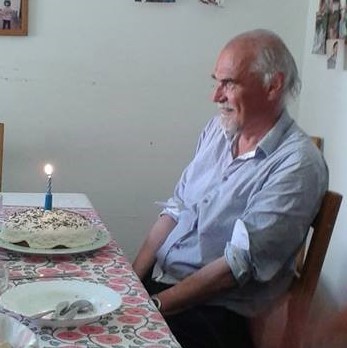
Age: 71
Nationality: Dutch
Job: Retired. I was a Biology teacher in a secondary school
When did you first come to A Rocha? I first came in 1987, I heard about A Rocha through the leader of our house fellow-ship, Peter Slwimer who had met Peter Harris in London and was told about A Rocha, in 1986 he visited the centre. I was very interested when I heard him talk about A Rocha and I decided to visit. I am not just a regular visitor, when I come I also do some volunteer work. I do bird surveys within the A Rocha study area and in the past I wrote some articles for the A Rocha Observatory reports about birds and molluscs. I also did some molluscs monitoring within the Ria de Alvor and contributed to the molluscs and rock collection that are available in the exhibition room.
What does A Rocha mean to you? I really enjoy the combination of the Christian organization, that cares for natural life, and the sense of community. I like to do my birdwatching and have the feeling I am also doing useful work, contributing for A Rocha monitoring program. I really like it here and my visit this year was my 50th visit to the centre!
With all the wonderful birds here, which is your favourite? It is difficult to mention the favourite bird after seeing here about 220 species! Rollers are uncommon and beautiful. A big impression was a whirling flock of 190 Griffon Vultures or a stream of migrating Booted Eagles over Cruzinha. I also like to photograph flowers!
IFO’s – Identified Flying Objects…
Two-Tailed Pacha (Charaxes jasius, Linnaeus, 1767)

Morphology: It is the biggest butterfly in Europe with a wing spam between 65 to 90 mm (females are larger than males). It belongs to the Nymphalidae Family; the upper wings are dark brown with double orange margins, the inner wings are brown and orange with a variable pattern and a white transversal band, the hindwing has blue spots and two small tails. It is bivoltine (two generations per year) and it flies from March to October.
Habitat: Maquis shrubland, warm dry places with many shrubs and trees.
Distribution: It occurs in most coastal regions in the South of Europe, Mediterranean region and North Africa.
Notes: The caterpillar feeds mainly on the leaves of the Strawberry tree (Arbutus unedo). The males defend their territory fanatically attacking other insects. The adults feed on the juice of rotting fruits, like figs.

Tweet… Tweet…
Identification: It is a large raptor from the Accipitridae Family, with a wingspan from 230 to 265 cm; it has upperparts fulvous brown with dark primaries and secondaries, with a short black tail, it has a bare neck with some white feathers at the base, it has a yellowish bill. The juveniles are darker with darker bills and need around five years to obtain adult plumage. Females and males are similar.
Habitat and Ecology: Mountains, cliffs, river valleys with rocky areas. It nests in small colonies, in rock cavities usually in high places which are difficult to reach by humans; females lay a single egg, which both parents incubate. It is a scavenger, feeding mostly on carcasses of dead animals; it detects its food while in flight. Breeding period starts very early, between December and January.
Eurasian Griffon Vulture (Gyps fulvus)
Distribution: It is a resident bird, although some Iberian individuals can winter in Africa. As a result of dispersion movements, especially from juveniles, in autumn it is common to observe big groups of Griffons in Mountains of the Mediterranean, North Africa and the Middle East. In Portugal large groups of Griffon Vultures are observed every autumn in and around the area of Sagres.
Threats: Least Concern in the International Union for Conservation of Nature (IUCN) red list. The population decreased considerably in the 19th and 20th Century, due to direct persecution and from the poisoned carcasses set to the livestock predators. In some areas the availability of food also cause some impacts due to the livestock management practises.
DID YOU KNOW?
- September was a good month for birds! On our ringing site we caught some migrants. On the 6th we caught a Sedge Warbler (Acrocephalus schoenobaenus), a Western Bonelli’s Warbler (Phylloscopus bonelli) and Willow Warbler (Phylloscopus trochillus); on the 13th we caught our first Garden Warbler (Sylvia borin), of the season, a Chiffchaff (Phylloscopus collybita) and a Spotted Flycatcher (Muscicapa striata).
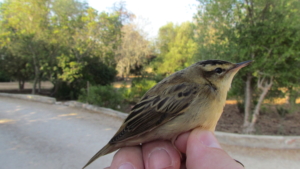
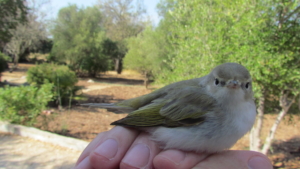
Acrocephalus shoenabaenus Phylloscopus bonelli
POPPED UP

Strawberry tree (Arbutus unedo, Linnaeus, 1753)
Identification: It is a shrub or small tree from the Ericaceae Family; it can grow up to 12 metres in height and it has deep roots. It has a short branched stem and a brownish bark peeling off in small flakes, the leaves are leathery and bright green, the flowers are white, often tinged with pinkish or green, blooming at the same time as the fruits are ripened, globose reddish berries (flowers in autumn).
Habitat and distribution: It grows in shrubby areas, maquis (dense shrubby vegetation of Mediterranean coastal regions), woodland margins, rocky slopes, cork oak woodlands, prefers acid soils. It is native of the South of Europe, North Africa, SW Ireland and Palestine.
Notes: In the Algarve the Strawberry tree fruits are used to produce an alcoholic drink, “Medronho”, very famous in the Monchique region. The plant is used as an ornamental for its beautiful flowers and fruits and because it is quite easy to cultivate and is adaptable to many climates. This plant can live up to 200 years!

PASSING BY
Some of A Rocha volunteers return as visitors or as in this case to do partnerships and send new students. Their experience at A Rocha made them realize how unique this place is!
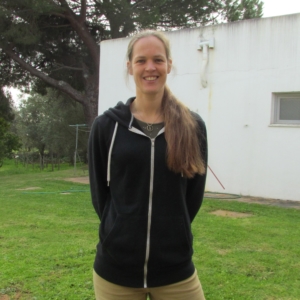 Anouschka Hof – 38 years old, Dutch
Anouschka Hof – 38 years old, Dutch
I studied Wildlife Ecology and Nature Conservation in Wageningen University and I did my Phd at the Royal Holloway in London. Now I am an assistant Professor in Wageningen University, Netherlands. I work in Conservation and the impacts of climate change in bird and mammal populations. I first came to A Rocha in 2005 as an EVS volunteer. I heard from a friend about the EVS program and I searched for places where I could apply. I found out about A Rocha Netherlands and I had an interview there and they told me about Portugal, they were my ‘sending’ organization. I really wanted to do the EVS after my studies, and the projects here really got me enthusiastic. My projects here were mainly to do with Nature Conservation, Environmental Education and Ornithology. I did a project with the Little Owl, analysed the ringing database and I did some habitat mapping. My last visit I came as a visitor but to work as well! I want to send students to do little projects at A Rocha.
I was here for almost 1 year. It’s like a second home away from home. Every time I come here I feel good.
My favourite bird is for sure the Hoopoe!
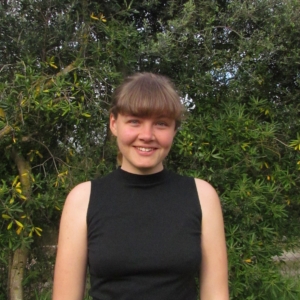 Lindy Schneider – 24 years old, Dutch, Student
Lindy Schneider – 24 years old, Dutch, Student
Between 9.00pm and 11.00pm I go out to survey Little Owls. I do this by playing a tape of a male territory call and recording the answering little owls in the area. I also record the distance and direction of the calls and hopefully by the end of my 6 weeks here I’ll have an estimation of the numbers of breeding pairs and where their territories are.
I really like being here. The weather and food is for sure better than in the Netherlands! I like joining the individual projects and just having fun with my fellow volunteers: going places, cooking together and even while doing the dishes. I’m looking forward to going birding more in the Algarve!
My favourite bird, if I could choose anything, it would be the Kōkako an endangered species of New Zealand. I have too many European favourites and there are too many birds I haven’t seen yet, but I’d probably choose Goldcrests, or Dippers.
DATES TO REMEMBER

4th, 11th, 18th and 25th of October – Cruzinha Bird ringing display & Moth Talk (10.15am to 12 am)
4th to 7th of October – Sagres Birdwatching Festival (http://www.birdwatchingsagres.com/)
5th of October – Implantation of the Republic, Public Holiday
13th and 14th of October – Blip Expo, better living in Portugal at Portimão Arena (http://betterlivinginportugal.com/index.php?lang=en)
30th of October – Friends Blueberry Farm Event
31st of October – Halloween
Come visit our stand at the Sagres Birdwatching Festival
October: it is obviously « migration month » and the most obvious place to go birding, Sagres, for the passage of birds of prey, passerines getting ready to cross the sea and marine birds flying along the coast. However, don’t forget to visit wetlands as many waders can be seen, on their way to Africa.
www.arochalife.com Check the website for more information on dates for organised tours. 
Thank you for supporting the Friends of A Rocha Portugal

Dr Roy Rodrigues
Av. Do Brasil, Qta das Palmeiras, Lt P2, R/c A, 8500-299 Portimão
(+351) 282180683
royaldente@gmail.com

Sítio da Amoreira, Lote 12,
Alvor, 8500-045 Portimão
(+351) 282412562/ 925433047
www.transfair.com.pt
Migration at Sagres
Gibraltar is maybe one of the most famous migration spots in Western Europe, but Sagres is definitely worth a visit in the autumn. Birds end up in Sagres (often by mistake on their way to Gibraltar), the observation conditions can be very good with birds flying pretty low, they will eventually cross the sea towards Morocco. Between the end of August and the end of November, there is a great diversity of birds in the area, Black Kites are the first species to migrate (in August) with Montagu’s Harrier, followed by Honey Buzzards and Booted Eagle (see photo), mostly in September.  This is also a good time to look for Eleonora’s Falcon. October is when the biggest flock of Griffon Vultures pass. Rüppell’s and Black Vultures can be found in these groups and sometimes big eagles too like the Spanish Imperial Eagle. November sees Short-toed Eagles and Common Buzzards migrating. Black Storks and Egyptian Vultures can be seen any time between September and November. Local Bonelli’s Eagles and Peregrine Falcon are seen almost daily.
This is also a good time to look for Eleonora’s Falcon. October is when the biggest flock of Griffon Vultures pass. Rüppell’s and Black Vultures can be found in these groups and sometimes big eagles too like the Spanish Imperial Eagle. November sees Short-toed Eagles and Common Buzzards migrating. Black Storks and Egyptian Vultures can be seen any time between September and November. Local Bonelli’s Eagles and Peregrine Falcon are seen almost daily.
Pallid Harrier seems to be a regular visitor in October and Lesser Spotted Eagle is also seen every year. Other rare species such as Red-footed Falcon or Lanner have also been recorded here.
The area is also good for passerines as this is indeed the last place where they can stop before crossing the sea to North Africa. If conditions for crossing are bad, bushes can be packed with birds waiting for better conditions to fly. Quite a few rare birds have been seen in the area over the years, Richard’s Pipit and Yellow-browed Warblers are being seen annually. The first sighting of Hume’s Leaf Warbler in Portugal was in the Sagres area it’s one of the most rare birds spotted there, we can also mention the Blyth’ Pipit, Blyth’s Reed Warbler and Lapland Bunting.
The position of the peninsula turns it into a good place to see seabirds. In the autumn, from The Cape you can sometimes see thousands of Gannets migrating and also Shearwaters, Skuas and Terns.
Sagres
Sagres is a town in the district of the Council of Vila do Bispo, Algarve, situated in the most southwest part of Europe (www.cm-viladobispo.pt/). It is part of a Nature reserve: Parque Natural da Costa Vicentina e Sudoeste Alentejano (http://www2.icnf.pt/portal/ap/p-nat/pnsacv) and one of the few places where wild nature and the cultural historic heritage is almost intact. It has a unique and beautiful landscape, a well preserved area with a small human population. The coastline has vast cliffs constantly exposed to erosion. The region is surrounded by the Atlantic Ocean, but the Mediterranean influence makes it a dry and hot climate, and this combination is responsible for the existence of so many natural habitats.
Thought of the month
“Therefore I tell you, do not worry about your life, what you will eat or drink; or about your body, what you will wear. Is not life more than food and the body more than clothes? Look at the birds of the air; they do not sow or reap or store away in barns, and yet your heavenly Father feeds them. Are you not much more valuable than they? Mathew 6:25-26
By Isabel Soares

Friends Event – A Blueberry Farm Visit – Tuesday 30th October, 35 Euros per person
The day will start at Cruzinha at 10.00am, where we will get together, be allocated transport and we will all leave at 10.30am.
We should arrive at the Blueberry Farm at about 11.00am where we will be greeted and be given a talk about the farm by the owner Chris Wells.
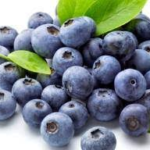 From about 11.30 we will be able to pick Blueberries for an hour, (we have been told that people can pick about 2 kilos in an hour). Baskets will be provided. All blueberries picked are included in the event price.
From about 11.30 we will be able to pick Blueberries for an hour, (we have been told that people can pick about 2 kilos in an hour). Baskets will be provided. All blueberries picked are included in the event price.
12.30 – 2.30 Picnic Lunch, relax and for those who would like to swim in the lake or try paddle-boarding you can. Bring your own Picnic and your own towel.
2.30 Transport back to Cruzinha, arriving around 3.00pm
Checklist
Sensible walking shoes
Hat
Towel
Containers/bags to take your blueberries home
Picnic Lunch
Invisible Barriers

Movements and distribution of animal population are delimited by barriers. These can be linked with climate, topography, landscape or even due to environmental policies.
Since the Bovine Spongiform Encephalopathy (BSE) crisis, EU regulation prevented dead cattle to be left on the fields. This led to a major crisis for species feeding on carrion, especially vultures. It also led to an increase in CO2 emissions due to the transport and incinerations of the carcasses. This regulation changed but in absence of clear guidelines, the way to deal with dead livestock was left to the discretion of each country. This led to big differences in neighbouring countries.
 Spain holds 95% of the European vulture population. There, carcasses can be left on feeding stations and it is not forbidden to leave them in the fields. In Portugal, the carcasses need to be removed from the fields and destroyed, with the exception of a few feeding stations (all near the border) that may be supplied with livestock carcasses under very restrictive licensing conditions.
Spain holds 95% of the European vulture population. There, carcasses can be left on feeding stations and it is not forbidden to leave them in the fields. In Portugal, the carcasses need to be removed from the fields and destroyed, with the exception of a few feeding stations (all near the border) that may be supplied with livestock carcasses under very restrictive licensing conditions.
In a recent study movements across country borders, Vultures were used as a model to determine how these differences in legislation can affect species. Several Griffon and Cinereous Vultures equipped with GPS were followed. The study focused on the border area between Spain and Portugal since it shows and homogeneity in terms of landscape, climate and topography.
This study shows that Spanish Vultures rarely cross the border and feed in Portugal, a consequence of the difference in the policy dealing with the dead livestock. Portuguese Vultures also seem to prefer to go to Spain to feed.
This is part of an article entitled Invisible barriers: Differential sanitary regulations constrain vulture, published by E. Arrondo et al. in Biological Conservation
If you have any queries please do not hesitate to contact us:
friends.arpt@arocha.org
Our office is open from Monday to Wednesday from 9:00 to 12:00 am
Or visit us on our open day: Thursdays from 10:15 to 12:00 am
See map: https://arocha.pt/en/contact-us/
GPS coordinates
37°08’39.8″N (37.1444) 8°36’29.2″W (-8.6081)
(+351) 282 968 380
Thank you for supporting us!
Hope to see you soon!

